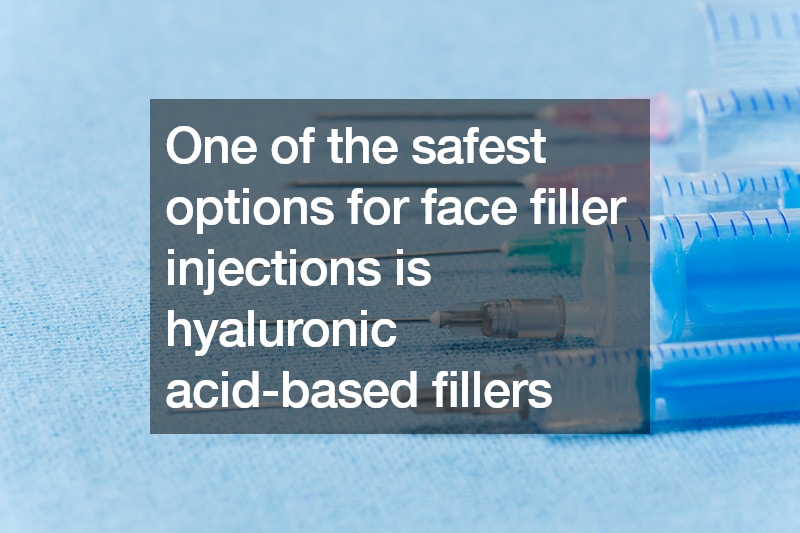Face filler injections have gained immense popularity as a non-surgical option for enhancing facial features and combating signs of aging. However, it’s essential to understand the potential risks associated with these procedures and take necessary precautions to ensure safety.
Understanding Face Filler Injections
Face filler injections involve the use of injectable substances, typically hyaluronic acid-based fillers like Restylane and Juvederm, to restore lost volume, improve facial contours, and reduce wrinkles. While these fillers are generally considered safe, there are risks involved, particularly if not administered correctly.
Choosing Hyaluronic Acid Fillers
One of the safest options for face filler injections is hyaluronic acid-based fillers. These fillers can be dissolved away if complications arise, providing a level of reversibility that other types of fillers lack. Hyaluronic acid fillers, such as Restylane and Juvederm, offer effective results with a lower risk of severe complications.
The Importance of Hyaluronidase
Hyaluronidase is a vital substance used to dissolve hyaluronic acid fillers in case of emergencies or complications. It’s crucial for clinics offering face filler injections to have hyaluronidase readily available to mitigate risks and address any adverse reactions promptly.
Avoiding Permanent Fillers
Permanent fillers, although enticing due to their longevity, pose a higher risk of complications, including blindness and tissue loss, if mistakenly injected into blood vessels. It’s advisable to steer clear of permanent fillers and opt for hyaluronic acid-based options for safer outcomes.
Understanding Danger Zones
Certain areas of the face, such as the glabella (between the eyebrows), pose a higher risk during filler injections due to the proximity of blood vessels. Incorrect injection in these danger zones can lead to severe complications, emphasizing the importance of seeking treatment from experienced practitioners.
Choosing Qualified Practitioners
When considering face filler injections, it’s essential to choose qualified practitioners who have undergone proper training and are knowledgeable about facial anatomy. Board-certified plastic surgeons or dermatologists are better equipped to perform these procedures safely and effectively.
Utilizing Safety Measures
Advanced techniques like using cannulas, long blunt needles designed to prevent injection into blood vessels, can further reduce the risk of complications during face filler injections. While not foolproof, cannulas offer an additional layer of safety and are recommended for certain procedures.
While face filler injections offer effective solutions for volume loss and wrinkles, there are various other facial cosmetic procedures available to address different concerns and enhance overall appearance.
Botox: Botox, or botulinum toxin, is another popular non-surgical treatment used to reduce the appearance of wrinkles and fine lines by temporarily paralyzing facial muscles. It is commonly injected into areas such as the forehead, between the eyebrows, and around the eyes to smooth out wrinkles and create a more youthful appearance.
Chemical Peels: Chemical peels involve the application of a chemical solution to the skin to exfoliate dead skin cells and stimulate the growth of new, healthier skin. They can improve skin texture, reduce the appearance of acne scars, and minimize fine lines and wrinkles, resulting in smoother, more radiant skin.
Laser Skin Resurfacing: Laser skin resurfacing uses laser technology to remove damaged outer layers of skin and stimulate collagen production, resulting in smoother, firmer skin. It can address various concerns, including sun damage, age spots, acne scars, and uneven skin tone, for a more youthful and rejuvenated appearance.
Microdermabrasion: Microdermabrasion is a non-invasive exfoliation technique that uses a handheld device to remove dead skin cells and impurities from the skin’s surface. It can improve skin texture, reduce the appearance of fine lines and wrinkles, and promote collagen production for healthier, more radiant skin.
Facial Fillers: In addition to hyaluronic acid fillers used for volume restoration, there are other types of facial fillers available, such as calcium hydroxylapatite (Radiesse) and poly-L-lactic acid (Sculptra). These fillers can provide longer-lasting results and are often used for deeper wrinkles and facial contouring.
Platelet-Rich Plasma (PRP) Therapy: PRP therapy involves extracting platelets from the patient’s blood and injecting them back into the skin to stimulate collagen production and promote tissue regeneration. It can improve skin texture, tone, and elasticity, as well as reduce the appearance of fine lines and wrinkles.
Thread Lift: A thread lift is a minimally invasive procedure that involves inserting dissolvable threads under the skin to lift and tighten sagging facial tissues. It can improve facial contours, reduce jowls, and lift drooping skin for a more youthful and lifted appearance.
Facial Implants: Facial implants are used to enhance facial contours and add volume to areas such as the cheeks, chin, and jawline. They can improve facial symmetry, restore lost volume, and enhance overall facial aesthetics for a more harmonious appearance.
With advancements in cosmetic technology and techniques, individuals have a wide range of options available to address various facial concerns and achieve their aesthetic goals. Consulting with a qualified cosmetic practitioner can help determine the most suitable treatments based on individual needs and desired outcomes.
Conclusion
Face filler injections can enhance facial aesthetics and boost confidence when performed safely by qualified practitioners. By understanding the risks involved, choosing the right type of filler, and selecting experienced professionals, individuals can achieve natural-looking results with minimal complications.
.

